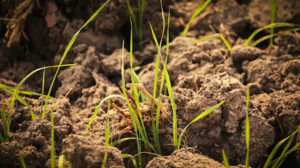Physical Address
23,24,25 & 26, 2nd Floor, Software Technology Park India, Opp: Garware Stadium,MIDC, Chikalthana, Aurangabad, Maharashtra – 431001 India
Physical Address
23,24,25 & 26, 2nd Floor, Software Technology Park India, Opp: Garware Stadium,MIDC, Chikalthana, Aurangabad, Maharashtra – 431001 India

Soil, an integral component of Earth’s ecosystems, has long been lauded for its role in absorbing greenhouse gases (GHGs) and mitigating climate change. The research titled Soil is a Major Contributor to Global Greenhouse Gas Emissions and Climate Change, published in Soil Journal, sheds light on its paradoxical nature, revealing that soil can become a significant source of these gases, contributing to global warming under certain conditions. This nuanced understanding highlights the promises and challenges of managing soil in a changing climate.
Soil as a Massive Carbon Reservoir
Globally, soil contains approximately 1,500 gigatonnes of organic carbon within the top meter, making it a more substantial carbon reservoir than the atmosphere and vegetation combined. This reservoir plays a critical role in absorbing about 30% of anthropogenic carbon dioxide emissions annually. Forest soils, grasslands, and wetlands act as natural carbon sinks, with mechanisms such as photosynthesis and microbial activity driving this absorption.
Yet, this balance is fragile. Human activities, including deforestation, intensive agriculture, and urbanisation, have released around 116 petagrams of carbon from the soil since the pre-industrial era. Rising global temperatures further accelerate microbial decomposition of organic matter, leading to a heightened release of carbon dioxide. Alarmingly, scientists estimate that between 2000 and 2020, land disturbances, including erosion and fires, caused the emission of significant GHG volumes, offsetting gains from carbon sequestration in natural ecosystems.
A Shift from Sink to Source
In specific contexts, soil transitions from being a sink to a source of GHGs, amplifying climate challenges. Arctic permafrost exemplifies this transition. Permafrost historically served as a stable carbon storage system covering nearly a quarter of the Northern Hemisphere. However, rising temperatures have triggered its thaw, exposing vast amounts of previously trapped organic carbon and nitrogen.
Between 2000 and 2020, Arctic permafrost emitted 38 million tonnes of methane, 670,000 tonnes of nitrous oxide and 12 million tonnes of carbon dioxide annually. Methane, mainly from wetlands, accounts for 26.5% of the region’s total emissions, while nitrous oxide, mainly from thawing soils, contributes 8%. This phenomenon, known as “permafrost carbon feedback,” accelerates global warming by releasing GHGs faster than ecosystems can absorb.
In agricultural landscapes, the use of synthetic fertilisers exacerbates soil emissions. Nitrogen-based fertilisers, essential for boosting crop yields, also lead to excess nitrogen in the soil. Microbes convert this surplus into nitrous oxide, a GHG with a global warming potential 300 times that of carbon dioxide. Agricultural soils are responsible for approximately 17% of global nitrous oxide emissions. Similarly, rice paddies and wetlands produce methane through anaerobic decomposition, with wetland systems alone contributing 83% of methane emissions in the permafrost region.
Mitigation through Sustainable Practices
Despite these challenges, soil remains a key ally in climate mitigation when managed sustainably. Restorative agricultural practices, such as cover cropping, reduced tillage, and the use of organic compost, improve soil structure and enhance carbon storage. Reforestation and afforestation initiatives also bolster the ability of soils to absorb carbon, with forests accounting for substantial annual sequestration.
In agriculture, precision fertilisation techniques aim to optimise nitrogen use and minimise excess, curbing nitrous oxide emissions. Similarly, innovative rice farming methods, like alternate wetting and drying, reduce methane emissions by creating aerobic soil conditions. Scaling these practices globally could help offset emissions while preserving soil’s ecological benefits. Other examples of sustainable land management include agroforestry, which integrates trees and shrubs into agricultural landscapes, and conservation tillage, which reduces soil disturbance during planting and helps retain soil carbon.
Bridging Science and Policy
Comprehensive data on soil emissions and sinks are essential for informed decision-making. Advanced monitoring technologies, including satellite imaging and field-based assessments, are improving the accuracy of soil carbon accounting. These tools help scientists track GHG fluxes – exchange of GHGs between the Earth’s surface and the atmosphere, assess regional vulnerabilities, and evaluate the impact of interventions. For instance, satellite imaging can provide a broad overview of soil conditions. At the same time, field-based assessments can offer detailed information about specific areas, allowing for a comprehensive understanding of soil’s role in climate change.
International collaborations have also gained momentum. Initiatives like the UN Decade on Ecosystem Restoration and the Bonn Challenge target the restoration of degraded lands, aiming to recover millions of hectares and enhance their capacity as carbon sinks. Furthermore, frameworks like the Paris Agreement emphasise integrating soil conservation into national climate strategies to achieve carbon neutrality, a state where the balance between the amount of greenhouse gases emitted and removed from the atmosphere is zero, thereby reducing the impact of human activities on the climate.
Soil’s dual role as a carbon sink and a GHG emitter highlights its centrality in the global climate narrative. While its capacity to sequester carbon is immense, the risks posed by unmanaged soil emissions demand immediate attention. Balancing these opposing roles requires a nuanced approach that combines sustainable land management with robust scientific monitoring. By doing so, soil can remain a vital component in the fight against climate change.
References:
https://climate.ec.europa.eu/system/files/2016-11/soil_and_climate_en.pdf